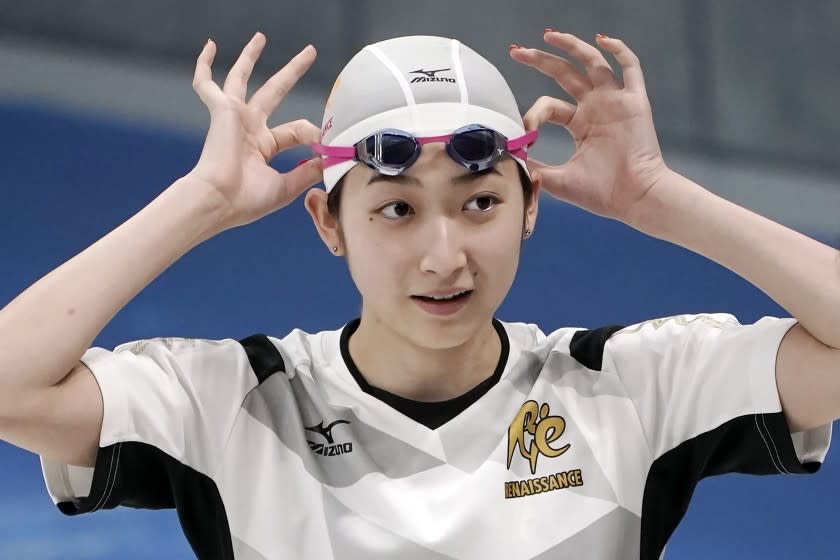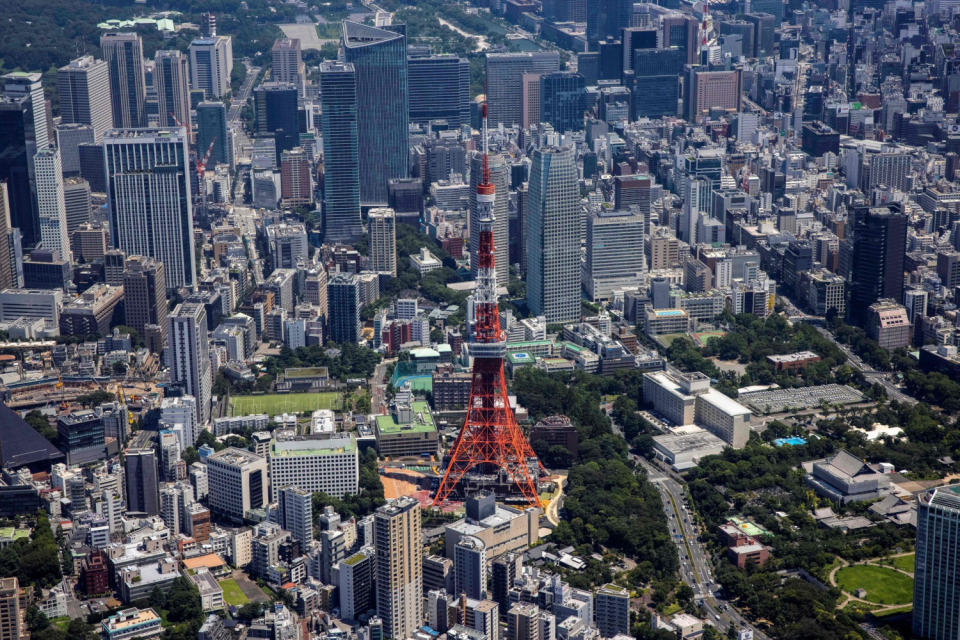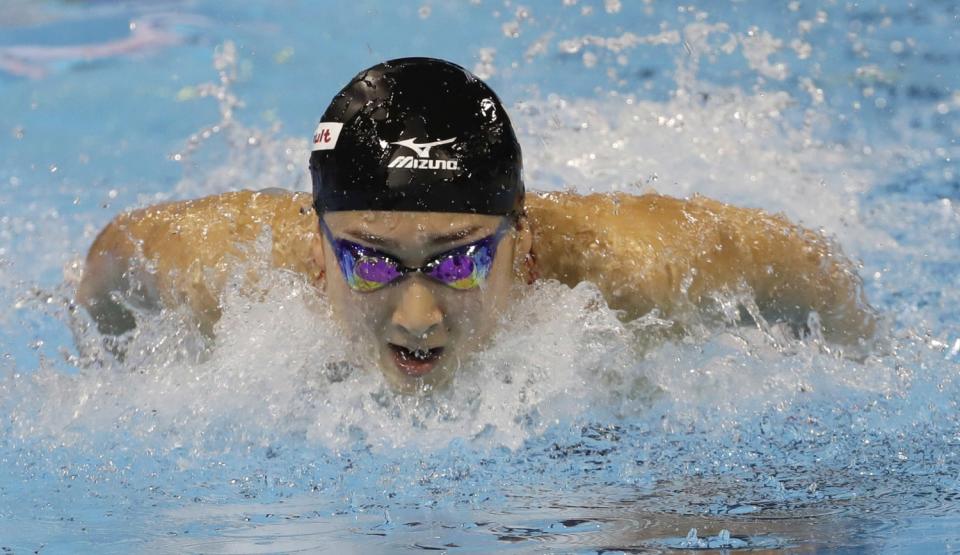Hernández: Rikako Ikee is the Olympics comeback story that deserves a standing ovation

This was where the unusual conditions of these Olympics were felt most acutely, the absence of a crowd diminishing the emotional impact of one of its most anticipated moments by several orders of magnitude.
Only the ear-splitting roar of a packed house at the Tokyo Aquatics Centre could have conveyed the significance of Rikako Ikee leaping off the starting block and into the water Saturday night.
Instead, there was nothing.
Japan was in fifth place in its heat when Ikee started the second leg of the 400 freestyle relay and was in fifth place when she finished with a team-best split of 53.63 seconds. Her team finished fifth in the race and ninth overall, one spot shy of qualifying for the Sunday morning finals.
The 21-year-old Ikee didn’t come into these Games as arguably Japan’s most popular Olympian because of her medal prospects. What made her special was that she qualified for her second Olympics after recovering from leukemia.
Ultimately, her return to her sport’s greatest stage had the feel of a training session, the ban on fans depriving her of the ovation that was rightfully hers.
Instances like this have made impossible the hope of shifting the focus of the Games from its pandemic-related restrictions to the competitions.
COVID-19 remains everywhere.
Tokaidai Sagami of nearby Kanagawa, which won the spring edition of the national high school baseball championship, was eliminated from its prefecture tournament because 17 of its 20 players tested positive for the coronavirus. In a country in which high school baseball is as popular as, if not more than, any professional sport, Tokaidai Sagami could have become only the eighth school in history to win both the spring and summer national championships in the same year.
Saturday marked the fifth consecutive day in which more than 1,000 new infections were reported in Tokyo prefecture. Another 17 cases involved Olympics athletes or staffers, raising the total to 127.

While Olympic soccer matches in Miyagi and cycling in Shizuoka are open to fans, Tokyo 2020 president Seiko Hashimoto asked fans in Tokyo with tickets to not travel.
Still, the Games’ efforts to safeguard against the spread of the disease have remained a widespread subject of controversy. Plexiglass divides journalists in the dining rooms at the Main Press Center, a measure previously described by Michael Osterholm, an epidemiologist and IOC consultant, as “hygiene theater.” However, the same journalists travel to venues in packed buses, often with people sitting or standing in the aisles between the rows of seats.
Of course, just because the circumstances prevented Ikee’s return from being properly acknowledged, it didn’t make her achievement any less remarkable.
The mythology around Ikee (pronounced “Ee-keh-eh”) starts with her birth. She was literally born in water, her mother using a birthing pool.
She grew up about10 miles from the Tokyo Aquatics Centre at which she competed Saturday, the Edogawa Swimming School she joined in elementary school just on the other side of the Arakawa River.
Standing 5-foot-7 with a 6-foot-1 wingspan, Ikee competed at the 2016 Rio Games as a 16-year-old, becoming the first Japanese swimmer to qualify in seven events. She finished fifth in the 100 butterfly.

In February 2019, Ikee was training in Australia and didn’t feel well, prompting her to return to Japan. Four days later, she announced she had leukemia.
The following month, she posted on Twitter, “This is several hundred times, several thousand times tougher than I imagined. I have stretches in which I can’t eat for three or more days. But I don’t want to lose.”
She later revealed in an interview with a Japanese publication that she was unable to get out of bed for more than two weeks after her first round of radiation treatment. In another interview, she acknowledged thinking she was better off dead.
In December of that year, 10 months after she was hospitalized, she was finally discharged. She said at the time her goal was to qualify and medal at the 2024 Paris Games, if not the 2028 Los Angeles Games.
When Ikee resumed training in March of 2020, looking emaciated, she hadn’t been in a pool for more than 400 days.
“I lost everything that I had built up from the time I started swimming,” she said.
She returned to competition in August. She won her heat in the 50 freestyle, but her time was more than two seconds slower than her personal best, a Japanese record.
“My priority was to have fun, and I think I was able to have fun swimming,” she said after the race.

Ironically, the pandemic offered her an opportunity to return to the Olympics sooner than she initially hoped, as the 2020 Games were postponed by a year. She won four events at the Japanese national championships in April. While her times didn’t meet the Japanese Federation standards required for her to compete at the Games individually, she earned places on the 400 free and medley relays.
“It was devastating to follow when she mentioned she had cancer,” said Sarah Sjostrom of Sweden, the defending Olympic champion in the 100 fly. “I’m so glad she has recovered well from it, and that she is in the Olympics now. It’s just amazing.”
Reflecting on how she reached these Games, Ikee said, “I’m in an environment that I couldn’t have imagined a year ago. I think this is my destiny.”
Ikee swims next Friday in the 400 medley relay, again in relative silence.
This story originally appeared in Los Angeles Times.

 Yahoo Finance
Yahoo Finance 